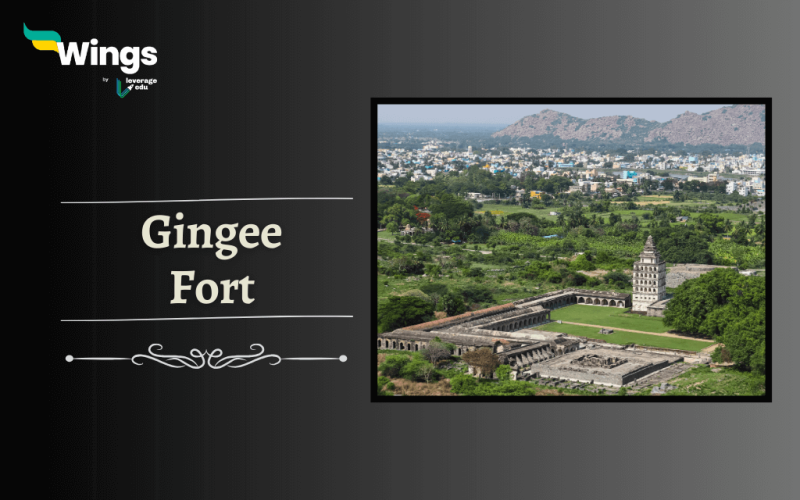Gingee Fort is also known as Senji Fort, is a majestic fortress located in the Villupuram District of Tamil Nadu, India. It is a majestic citadel steeped in history and shrouded in mystery. With a rich history dating back to the 12th century, this historical site has witnessed several significant events and rulers over the centuries. Let’s delve into the details about Gingee Fort history and discover its unique features and facts.
Table of Contents
| Commissioned by | Kon Dynasty |
| Also Known as | Troy of East; Senji Fort |
| Location | Villupuram District, Tamil Nadu |
| Timings | 9:00 am to 4:30 pm; Open Everyday |
| Entry Fee for fort | ₹ 15 for Indians; ₹ 100 for foreigners |
| Camera | Allowed and Free |
History of Gingee Fort
The 12th century witnessed the laying of the foundation stones for Gingee Fort by the Kon dynasty. It is believed that it was originally built by Ananta Kon around 1190 AD and further fortification was done by his descendent Krishna Kon in the 13th century.
- The subsequent century saw the Cholas and the Vijayanagara Empire leave their mark on the fort, transforming it into a formidable defensive complex through continuous modifications and expansions.
- The 15th and 16th centuries saw the rise of the Gingee Nayaks, initially under the Vijayanagara Empire’s umbrella.
- In 1677, the Marathas, led by the legendary Chhatrapati Shivaji Maharaj, wrested control of the fort from the Bijapur sultanates, adding another chapter to its ever-evolving story.
- The year 1691 marked a significant event when the Mughals, under the leadership of Santaji Ghorpade, laid siege to the fort but were ultimately unsuccessful in capturing it.
- However, in 1698, after a prolonged and relentless siege, the Mughals finally breached the fort’s defences, marking a turning point in its history.
- The 18th century witnessed the fort changing hands multiple times, becoming a coveted prize in the power struggles of the region. The Carnatic Nawabs, the French, and the British finally in the year 1761, all vied for control, with a brief interlude under Hyder Ali’s rule.
Features of Gingee Fort
The fort is divided into three main hills – Krishnagiri, Chandrayandurg, and Rajagiri – each with its own unique features and structures.
Rajagiri (Main Fort):
- It is the most impregnable citadel at about 800 feet high.
- It can be reached through seven gates.
- This main fort contains important buildings like a seven-storied Kalyana Mahal (marriage hall), Stables, Granaries, Meeting halls, Temples, Mosques, Shrines and Pavilions
- The Kamalakanni Amman temple is dedicated to the presiding deity, Kamalakanni.
- The Ranganathar Temple, bell tower, watch tower, cannon, and drawbridge are some other features of this hill.
- Lower Fort: This fort includes: Arcot Gate, and Pondicherry Gate, which was later improved by the French. Prison, Tanks, the Platform where Raja Desingh died, a Large Hanuman statue and the Prisoner’s well.
- The inner fort contains: the Kalyana Mahal, Royal stables, Ruined royal palace, Granaries, Magazine and Venugopalaswami shrine
- Krishnagiri: It is a smaller citadel north of Tiruvannamalai road and can be reached by granite steps.
- Chandrayan Durg: This hill’s military significance is less than other forts. It contains interesting buildings from later periods.
- Chakkiliya Durg: It is another fort which is believed to be possibly used by Chamar warriors.
Some Additional Features include –
- Two freshwater sources on the summit of Rajagiri.
- Three rainwater storage reservoirs.
- Site museum with sculptures and artefacts.
- Scattered guns and cannonballs.
- It is surrounded by thick walls and fortified gates, making it a challenging fortress to conquer. It was given the title of “the impregnable fort” by Shivaji Maharaj himself.
Also Read – Aguada Fort History: Features, Facts, Timings & More
Interesting Facts about Gingee Fort
- Gingee Fort is often referred to as the “Troy of the East” due to its impenetrable defences and strategic significance.
- Gingee Fort has been featured in various literary works, including Tamil epics and historical chronicles.
- The fort’s architectural grandeur and historical importance have earned it a place on the tentative list of UNESCO World Heritage Sites.
- The fort was declared a national monument in the year 1921.
Also Read – Lohagad Fort History: Features, Facts, Timing & More
Timings of Gingee Fort
The timings for visiting the Monument and watching the mesmerising views are as –
| Purpose | Timings |
| Entry | 9:00 am to 4:30 pm |
| Week Entry | Everyday |
| Entry Fee | For Indian citizens- Rs 15; For Foreigners – Rs 100 |
| Camera | Free |
The fort’s underground escape routes and secret chambers add to its aura of mystique and intrigue. In conclusion, Gingee Fort stands as a treasure trove of history and adds to the rich history and cultural heritage of Tamil Nadu and India as a country.
Other Attractions near Gingee Fort
| Sadhana Forest | Matrimandir |
| Gingee Venkataramana Temple | Chenjiamman |
| Senji Singavaram Ranganatha Temple | Arulmigu Arunachaleswara Temple |
Relevant Blogs
That’s all about Gingee Fort history! If you want to know more about topics like this, then visit our general knowledge page! Alternatively, you can also read our blog on general knowledge for competitive exams!
 One app for all your study abroad needs
One app for all your study abroad needs













